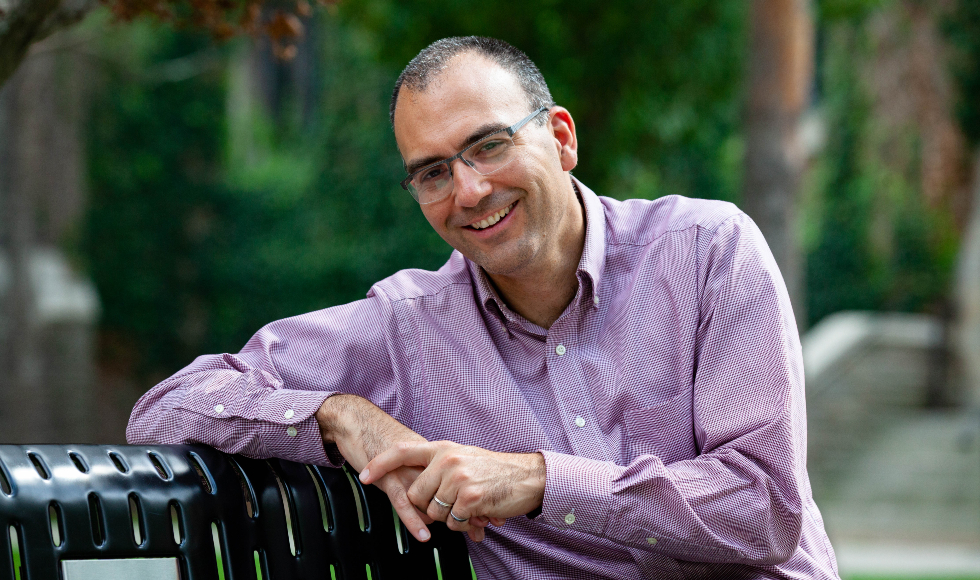Engineering Fresh Faces: André Phillion

Photos by Anna Verdillo
BY Sara Laux
November 7, 2018
Welcome to Fresh Faces. In this series, we’re highlighting over 40 engineering faculty members, all hired in the last five years, who are doing interesting and innovative things in the lab and the classroom.
André Phillion is an associate professor in the department of Materials Science & Engineering. His research focuses on the solidification of engineering metals, mathematical modelling of materials and processes, x-ray tomographic imaging and 4-D materials science.
On his work
I’m a metallurgist by training, and my work is in process metallurgy. What I’m really interested in is understanding the fundamentals of solidification, which is the process by which materials go from liquid to solid.
All materials have a microstructure, and for me, the microstructure of different metals is what’s fascinating. It drives all the different mechanical, electrical and other properties available for engineers to manipulate.
In my research group, we develop models at different length scales to improve the castability or weldability of a process to get the desired microstructure free from defects as inexpensively as possible.
Recently, we’ve started research on solidification fundamentals during additive manufacturing, or 3-D printing, of metals.
Finally, we work with x-ray imaging, using very advanced facilities – like the Diamond Light Source in the UK – to observe the solidification of additive manufacturing using x-rays.

On the applications of his work
Our work has many applications for industry. We work with companies involved in metal production, companies in the pulp and paper industry, and companies using additive manufacturing – we learn about the fundamental science of processing and how that can be used in industry to improve the performance of a process or product. There are lots of materials out there, and if we can make them cheaper and reduce defects, they’ll be used for many more applications.
On what’s cool about materials science and engineering
Materials Science & Engineering is a complex subject. On one hand, it’s definitely engineering – you’re developing new materials using engineering design principles, you’re improving materials processing and you’re using techniques to evaluate the quality all along different stages of a process.
On the other hand, material properties are governed by science, chemistry and physics. Without understanding the science it is difficult to apply engineering design.
The study of materials is a combination of structure, process and properties. The structure of a material is science, the processing is engineering, and properties include elements of both.
On figuring out complex problems
For me, the problem often isn’t the idea, but how to translate it with pen and paper. I get my best thinking done when I’m out hiking in the Dundas Valley Conservation Area. Sometimes I’ll listen to podcasts, but if I’m working on a piece of writing, I’ll think about what I want to write, then send myself emails with ideas about what to write. At the end of a walk, I’ll often end up with 20 or 25 different emails that help me tie together what I want to say.
On being a professor
I view the job as professor of engineering as a vocation – so for me, it’s all encompassing. My work and my life and my grad students and my family are all woven together.

On Scouting
I was a Scout for many years, and now I’m the Colony Scouter of the 6th Dundas scout group, where my son is a Beaver Scout. I love being outdoors, and showing kids all the cool things you can do outdoors. I also really like that, in Scouts, everyone works at their own level. When you’re in Scouts, you’re teaching life building skills – teamwork, self reliance, dedication, excellence – without the competitive aspect of winning. We push the youth we work with to be the best they want to be through outdoor activities, and through service to self and others.
Inside the lab…
I love “driving” the machines – setting them up, programming them, and training new grad students on how to use them.
Outside the lab…
I like to spend lots of time outdoors. I love exploring nature.


